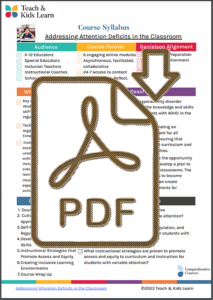Using Games to Make Math Fun!, Grades PreK-6
Course Description
 |
This course on using games to teach math in the classroom will provide educators with the knowledge and skills necessary to employ gamification to teach and reinforce math facts, concepts, and procedures. Educators will learn about the benefits of using math games in the classroom, including how they can support student engagement, motivation, and understanding of math concepts.
In addition, the course will examine the role of math games in reinforcing more complex math concepts, including problem-solving and critical-thinking skills. Educators learn how to involve families and use math games to build connections between home and school. |
Throughout the course, educators reflect on their teaching practices and develop a plan for incorporating math games in their classrooms. The goal of the course is to empower educators to become confident and competent teachers equipped to design engaging, hands-on math instruction.
Essential Questions
- What is the relationship between math games and student engagement?
- How can math games promote fact fluency and conceptual understanding?
- What are the best ways to use math games to make home-school connections?
Course Agenda
|
| Course Syllabus |
|
Comments from Teachers
“I have already started playing math games with my students. I can see the benefit in my classroom. I also have a wealth of valuable games to play with my students and ways to easily differentiate the games when needed.”
“I have learned new ways to incorporate math games into my classroom. This course provided me with the importance of math games and how they can create a strong relationship between school and students and school and families.”
Danielson Teacher Framework Course Alignment


